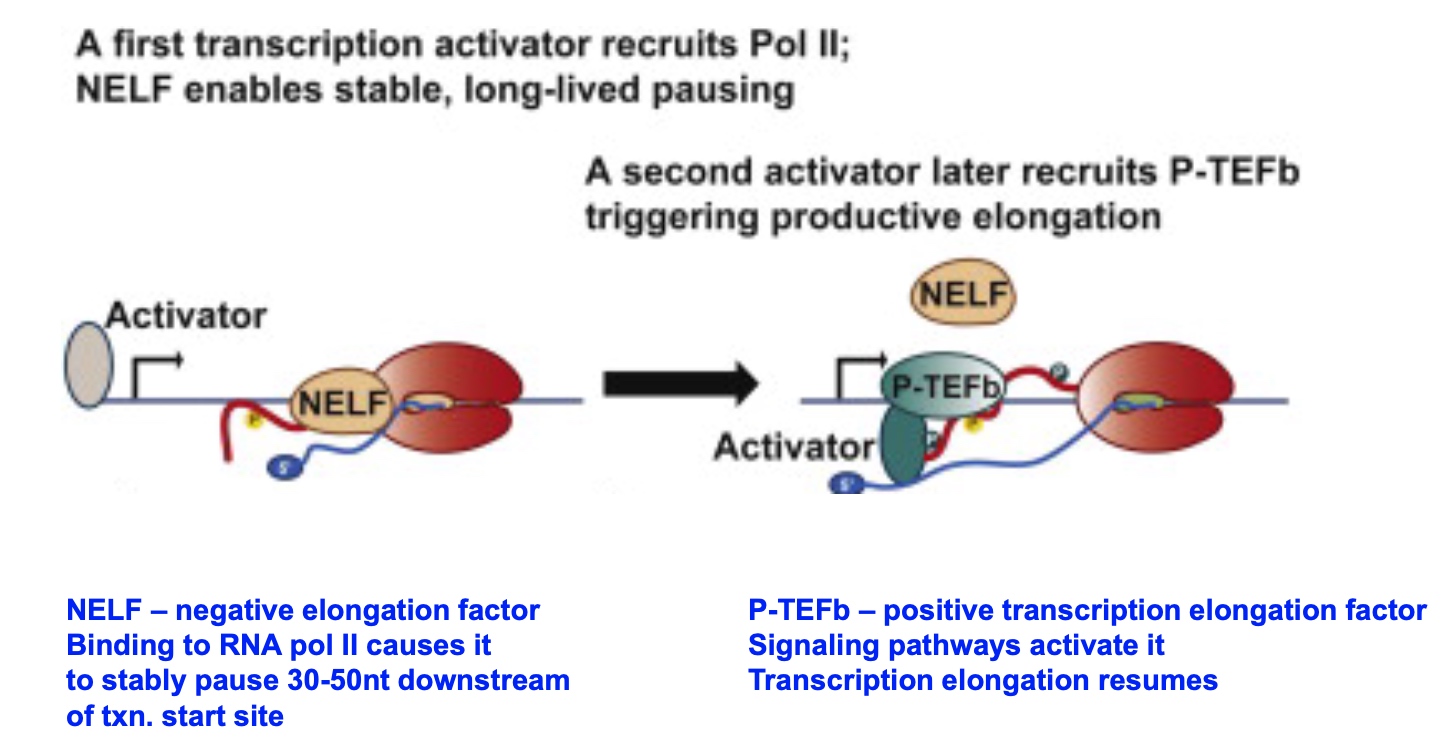Poll Everywhere thought question:
Which has the highest fidelity?
- A. RNA polymerase
- B. Pol III (replicative polymerase)
- C. Pol IV (TLS polymerase)
Pol IV (TLS polymerase) has large active site and no proof-reading function.
It is OK for RNA polymerase to have some mistake.\(10^{-4}\), whereas DNA polymerase has error rate around \(10^{-7}\)
The Transcription Cycle in Bacteria
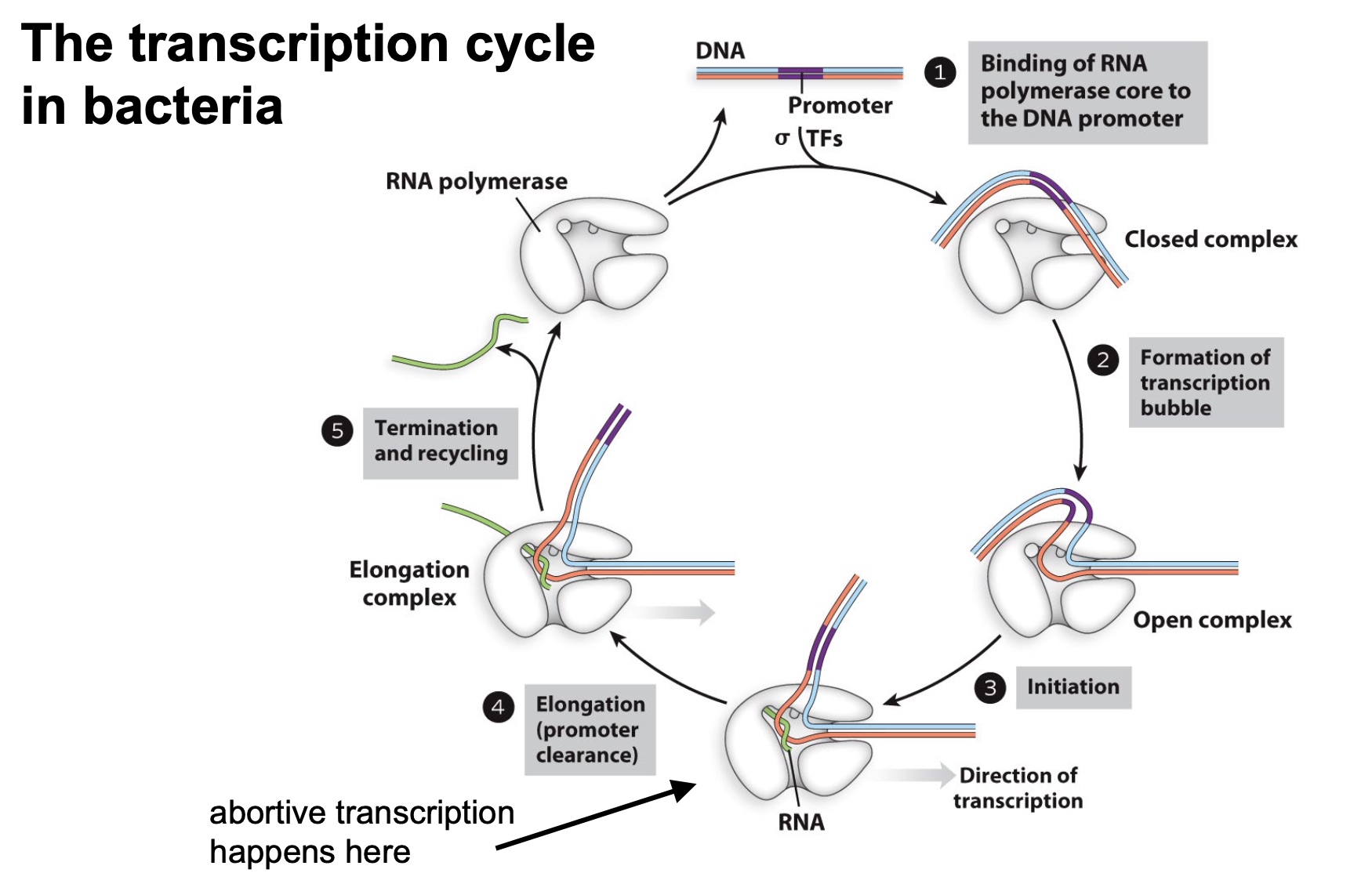
Transcription factor, sigma, will help DNA polymerase to bind to the DNA pormoter.
Closed complex will become open coplex with the formation of transcription bubble.
RNA polymerase can load on to the gene more than one at a time. FOr a really big gene, there can be a lot of RNA polymerase loaded on the DNA.
Structural features of sigma that act during initiation and elongation
- Binding of RNA polymerase to promoter
- Transition to open complex
- Promoter clearance
- Rate of mRNA synthesis(elongation)
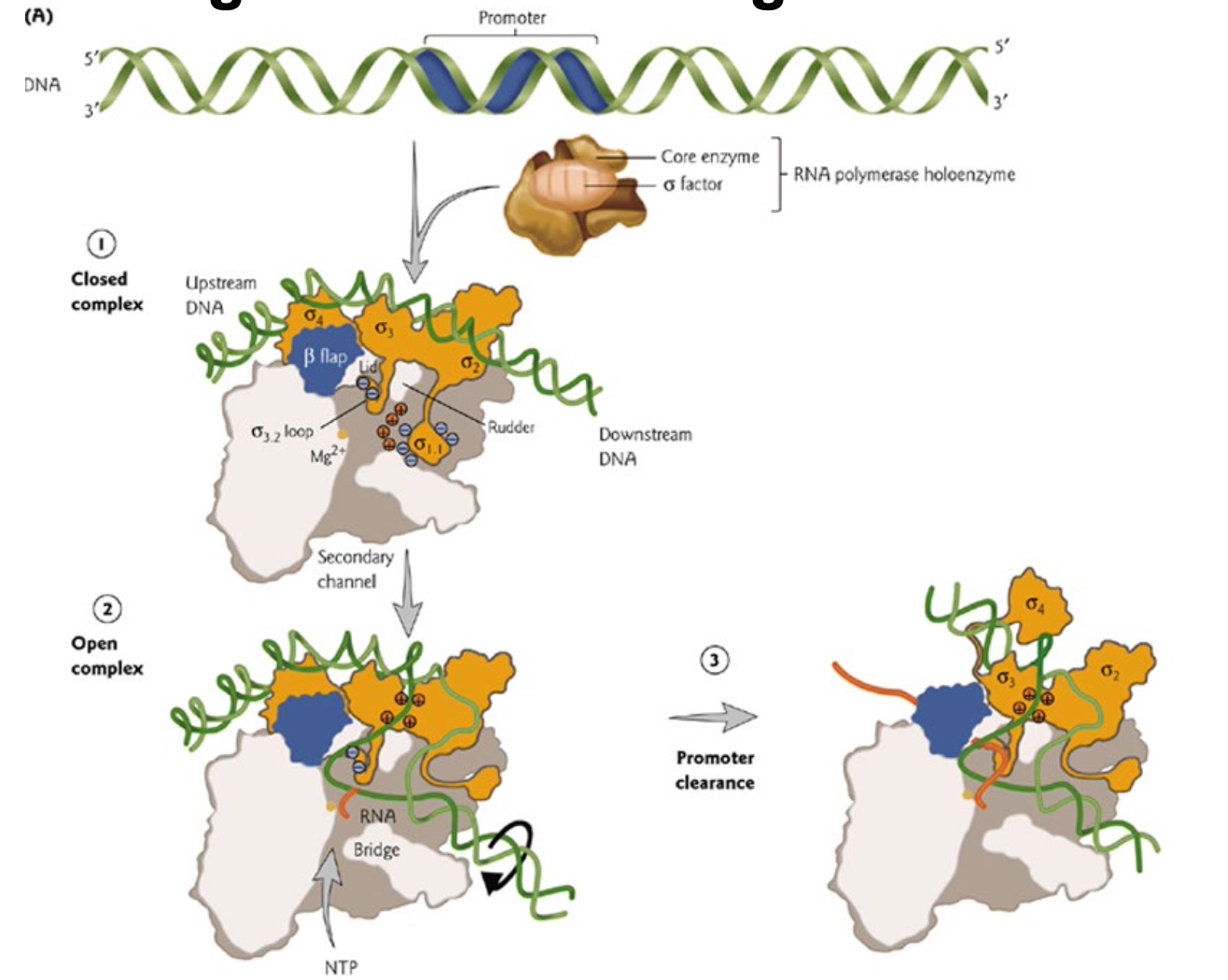
Poll Everywhere synthesis question:
Suppose that you have isolated a σ70 mutant whose σ4 subunit interacts more weakly with the RNA polymerase β-flap. Which of the following do you expect will be most drastically affected?
- A. Binding of RNA polymerase to promoter
- B. Transition to open complex
- C. Promoter clearance
- D. Rate of mRNA synthesis (elongation)
Computational analysis of a bacterial promoter consensus sequence
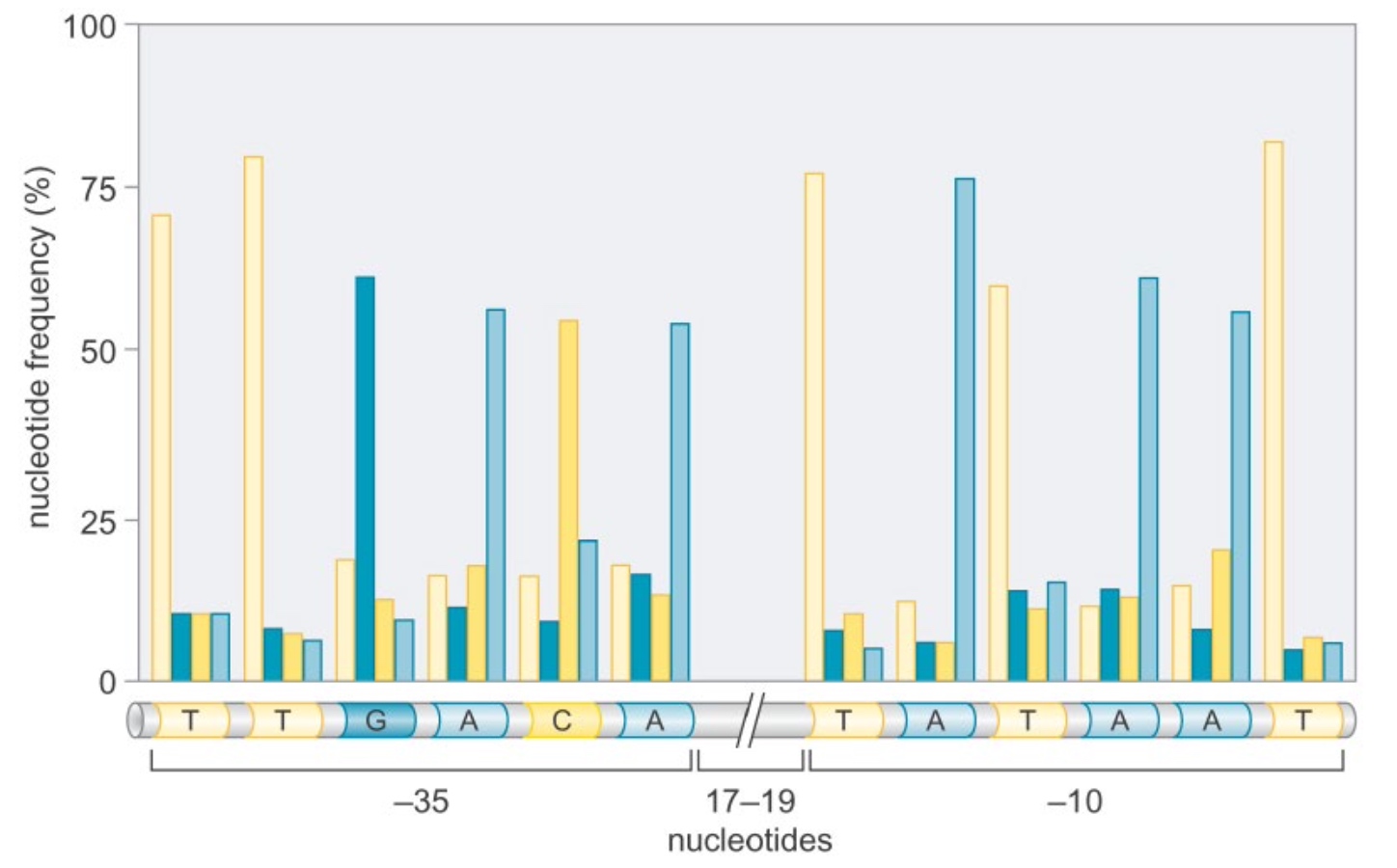
Structure of a bacterial promoter recognized by σ70
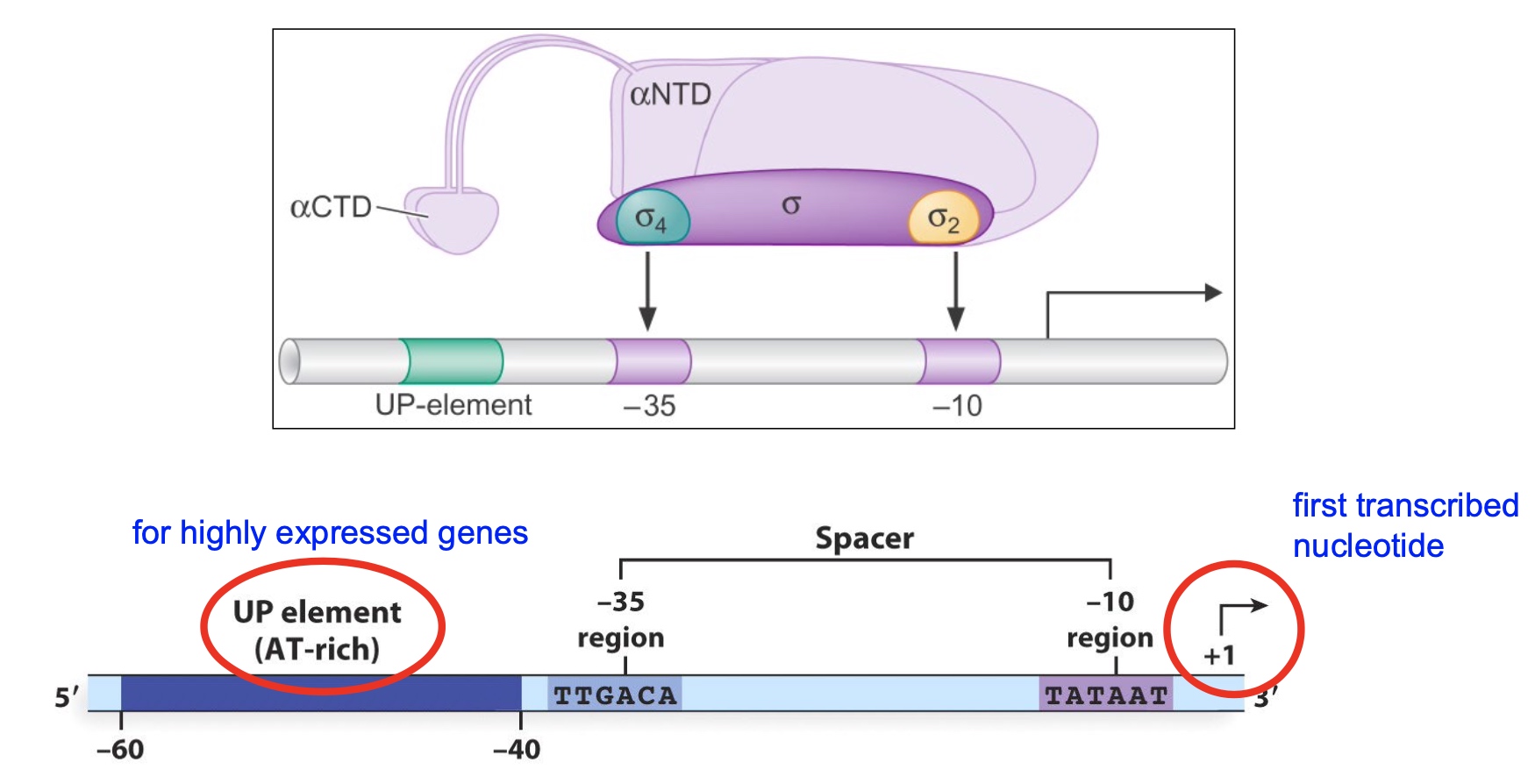
- sigma4 --> -35
- sigma2 --> -10
Mutational analysis of a bacterial promoter
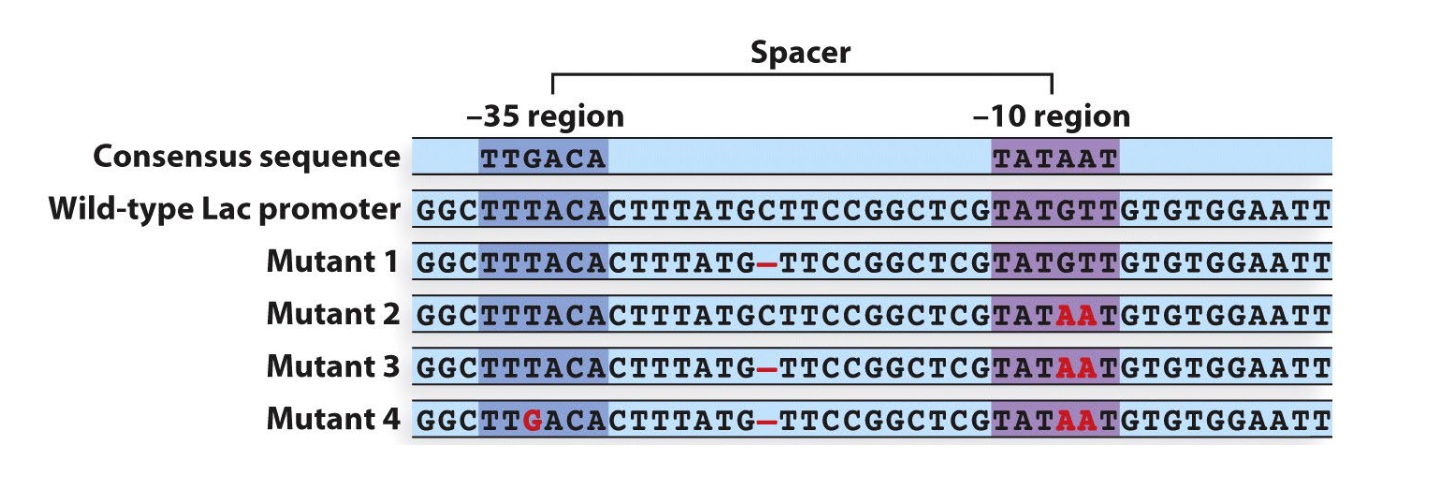
Poll Everywhere prediction:
Which promoter do you expect will be BEST at promoting transcription?
In real expriment, Mutant3 > Mutant2 > Mutant4 > Mutant1 > Wild-type
Maybe consensus sequence is not the best, it's just at the average level.
Different sigma factors are used when environmental conditions change
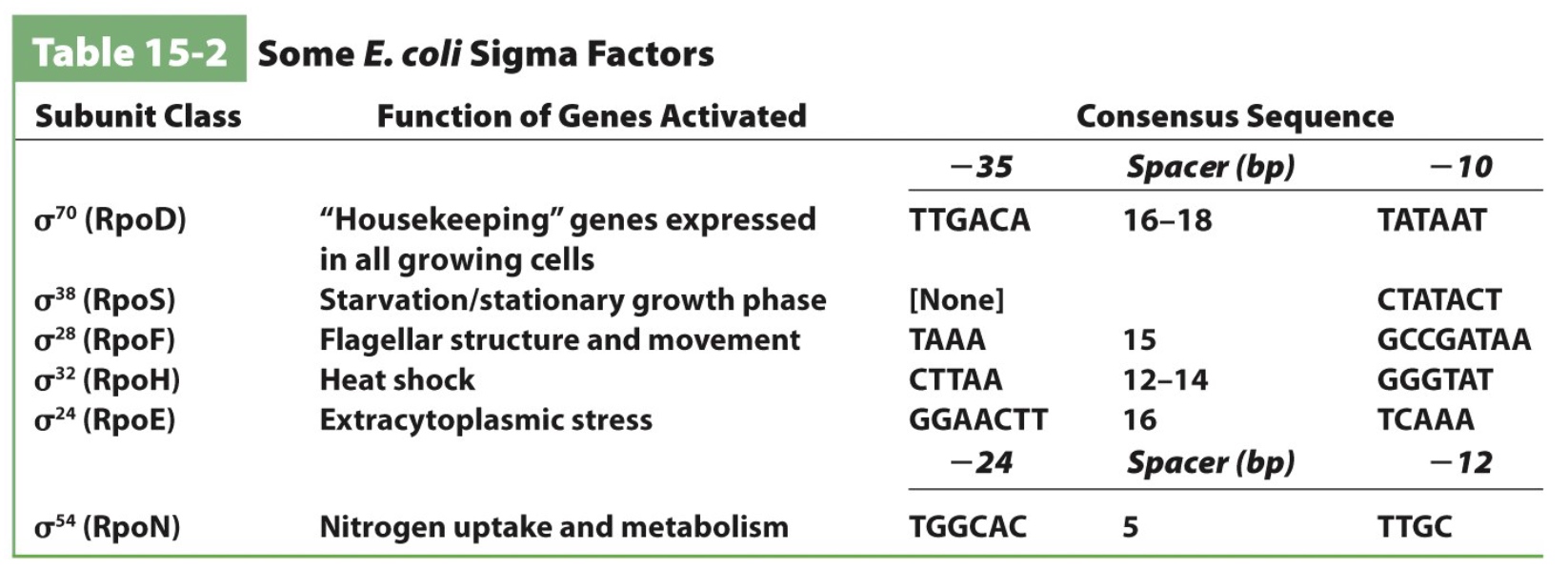
Suppose that you want to determine what genes are controlled by the σ38 factor. What is one experiment that you could do?
CHIP. In vivo experiment, bind antibody to \(\sigma^{38}\).
How can you study alternative sigma factors?
DNase footprinting
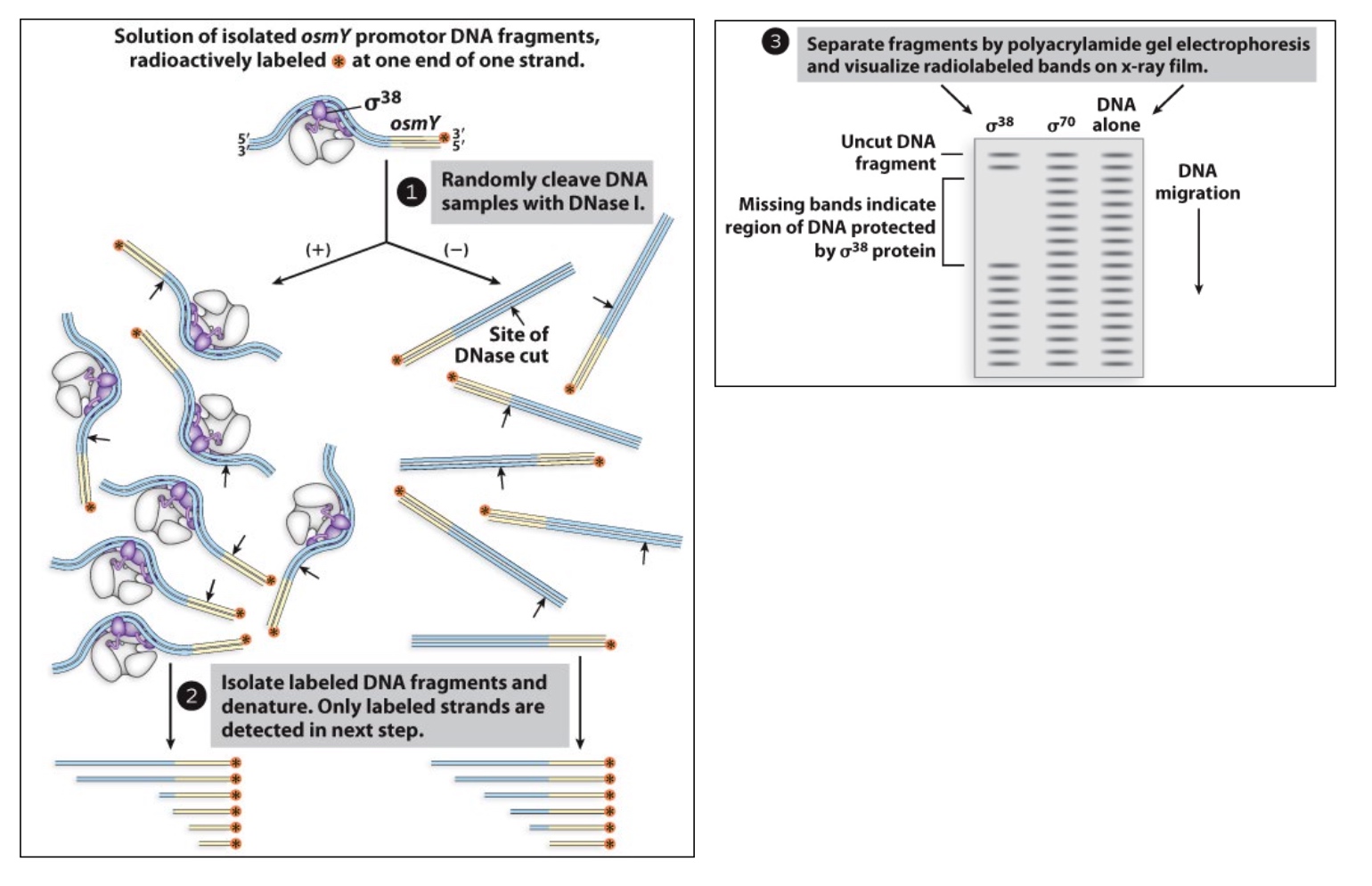
Reporter gene Constructs (lacZ, GFP, luciferase, etc.)
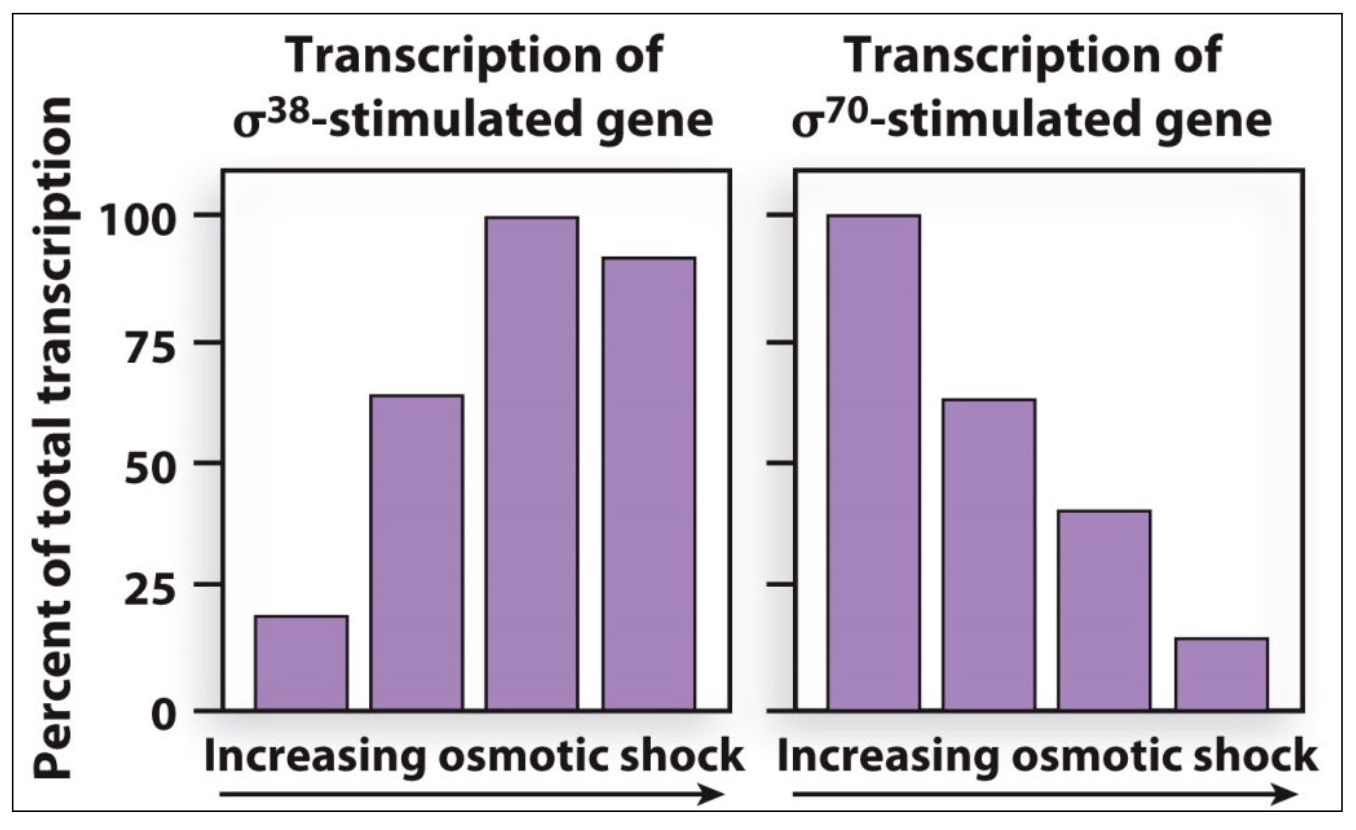
Similarities and differences between bacterial and eukaryotic transcription
Similarities:
- additional transcription factors are needed to improve the specificity of RNA pol binding to the promoter
- promoter escape can be regulated - the transcription cycle is similar
Differences:
- 3 RNA polymerases are used in eukaryotes RNA pol I – large rRNAs
RNA pol II – mRNAs, microRNAs, lncRNAs RNA pol III – small rRNAs, tRNAs - more factors are involved in initiation
- DNA enhancer sequences are used to promote transcription - mRNAs are processed before translation
- chromatin!!!
Eukaryotic RNA polymerase II is inhibited by α-amanitin
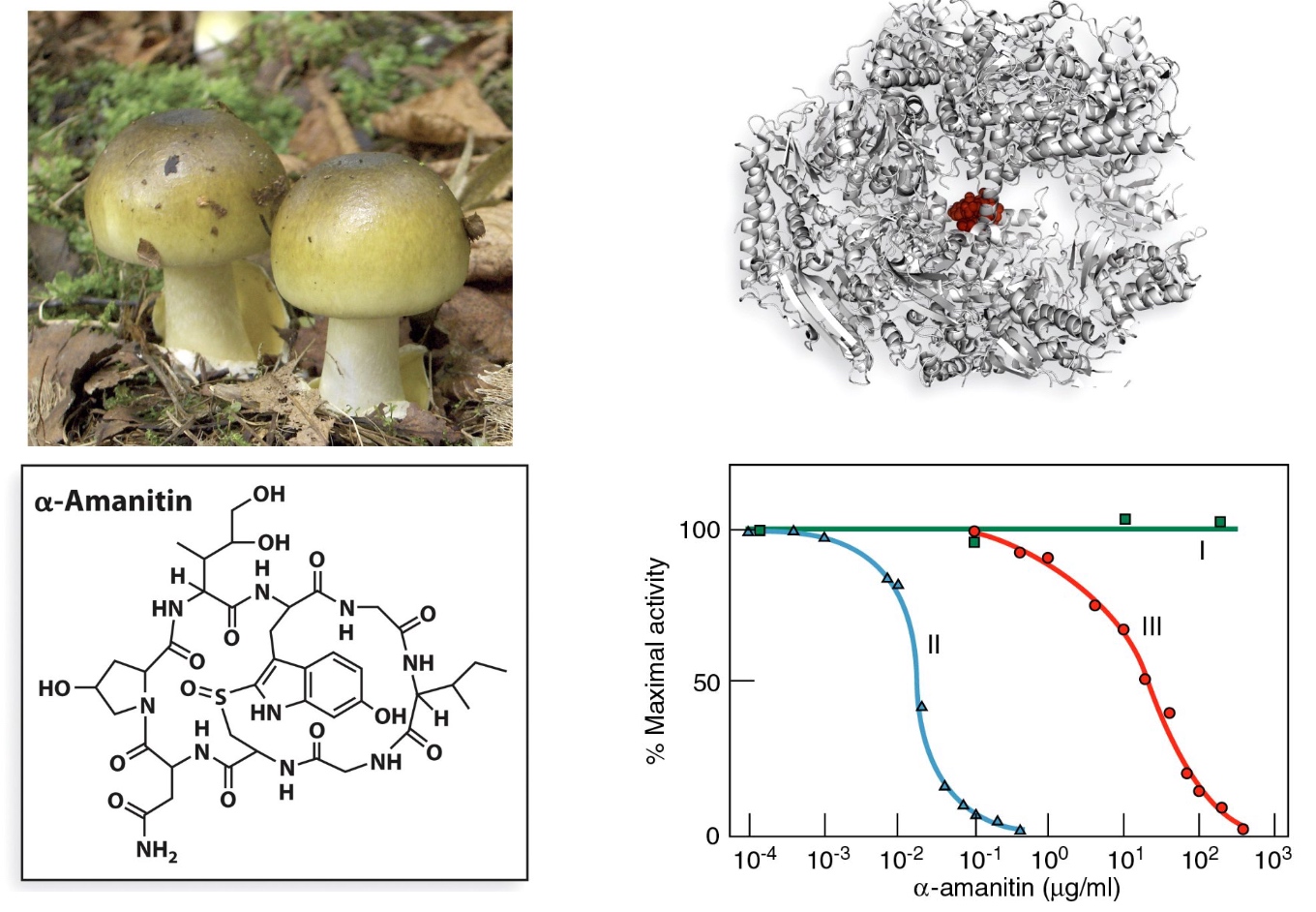
why mushroom is not killed by the toxin produced by itself?
Overview of eukaryotic Pol II transcription cycle
carboxy-terminal domain (CTD)
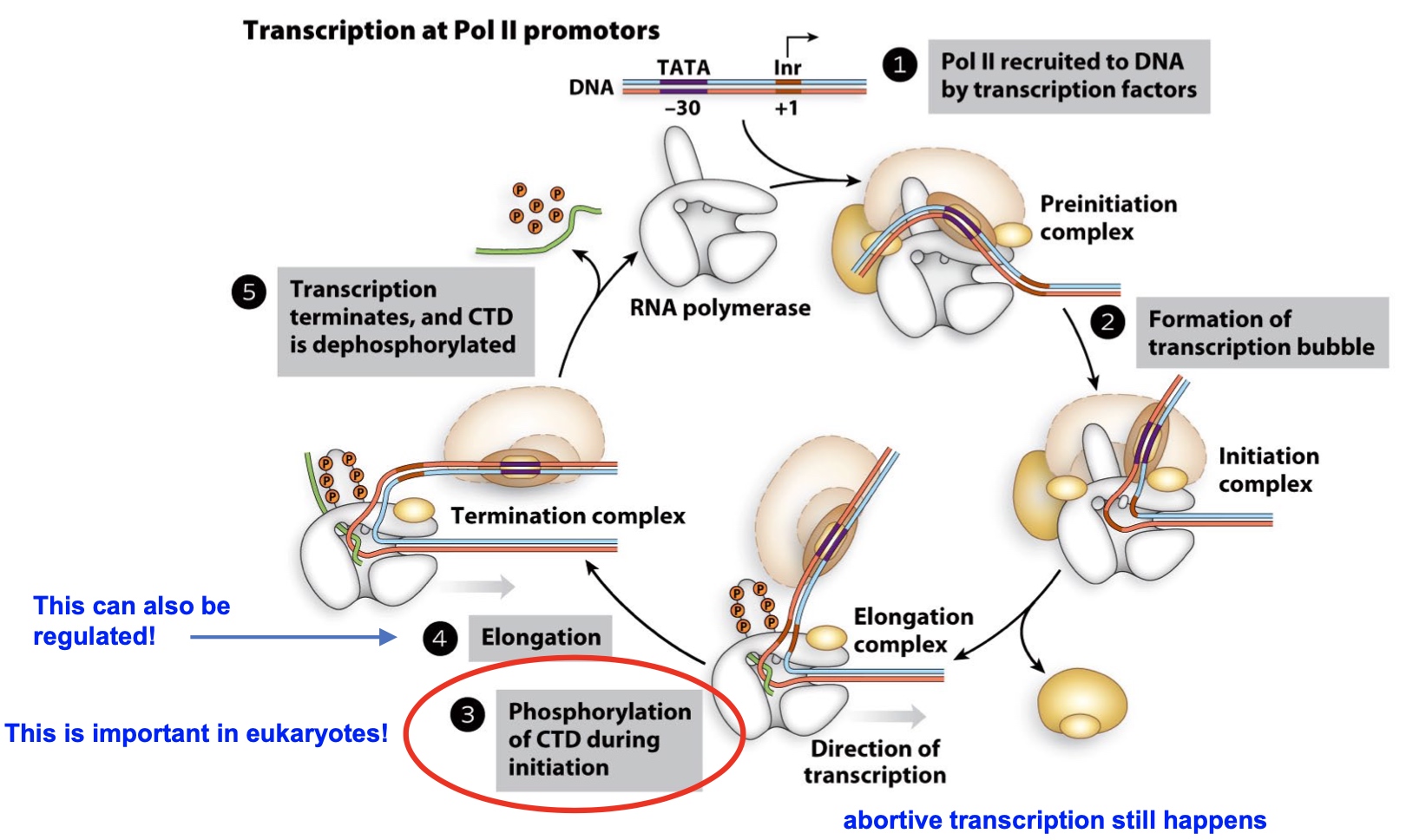
Overview of Pol II transcription initiation in eukaryotes
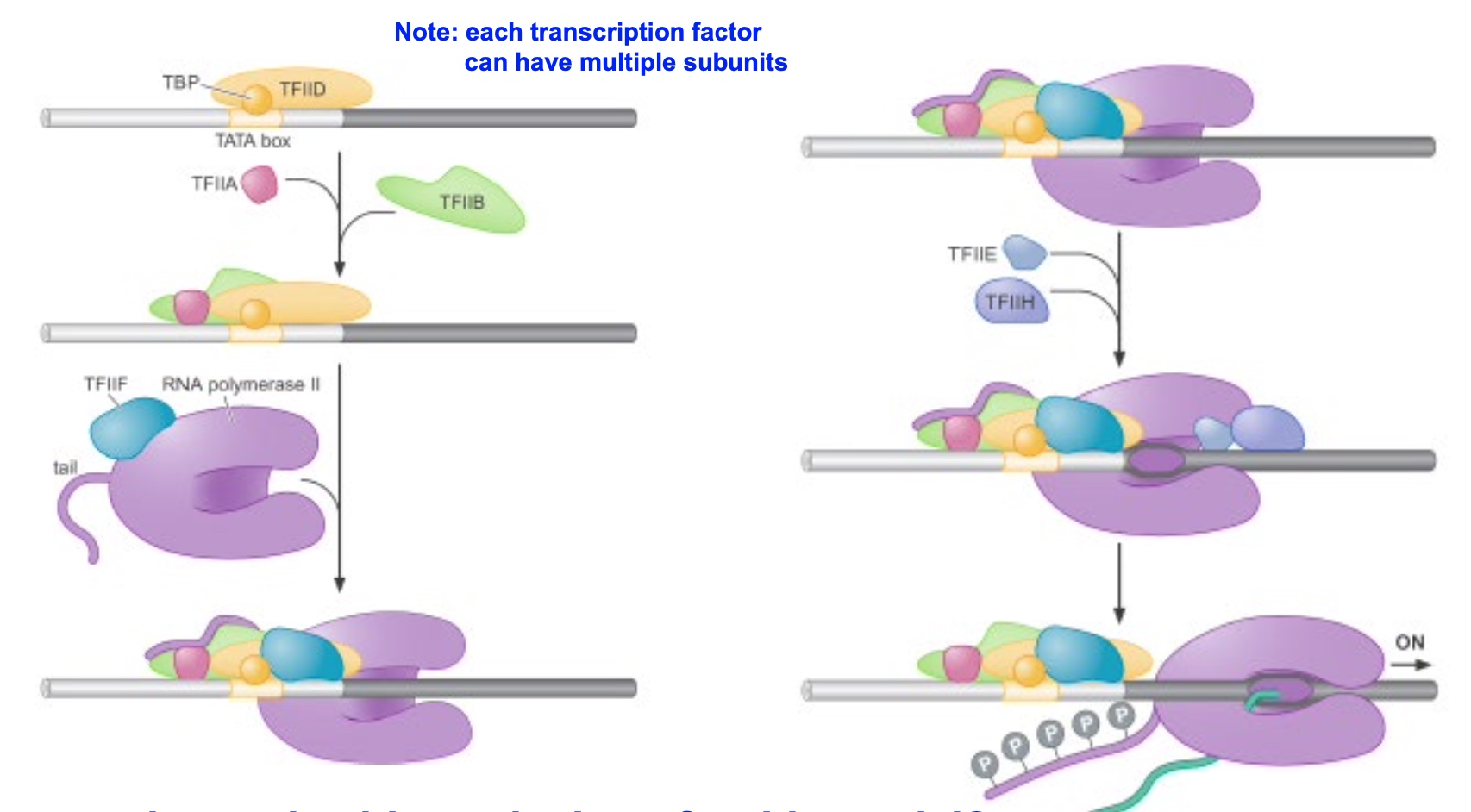
Structure of the Pol II core promoter
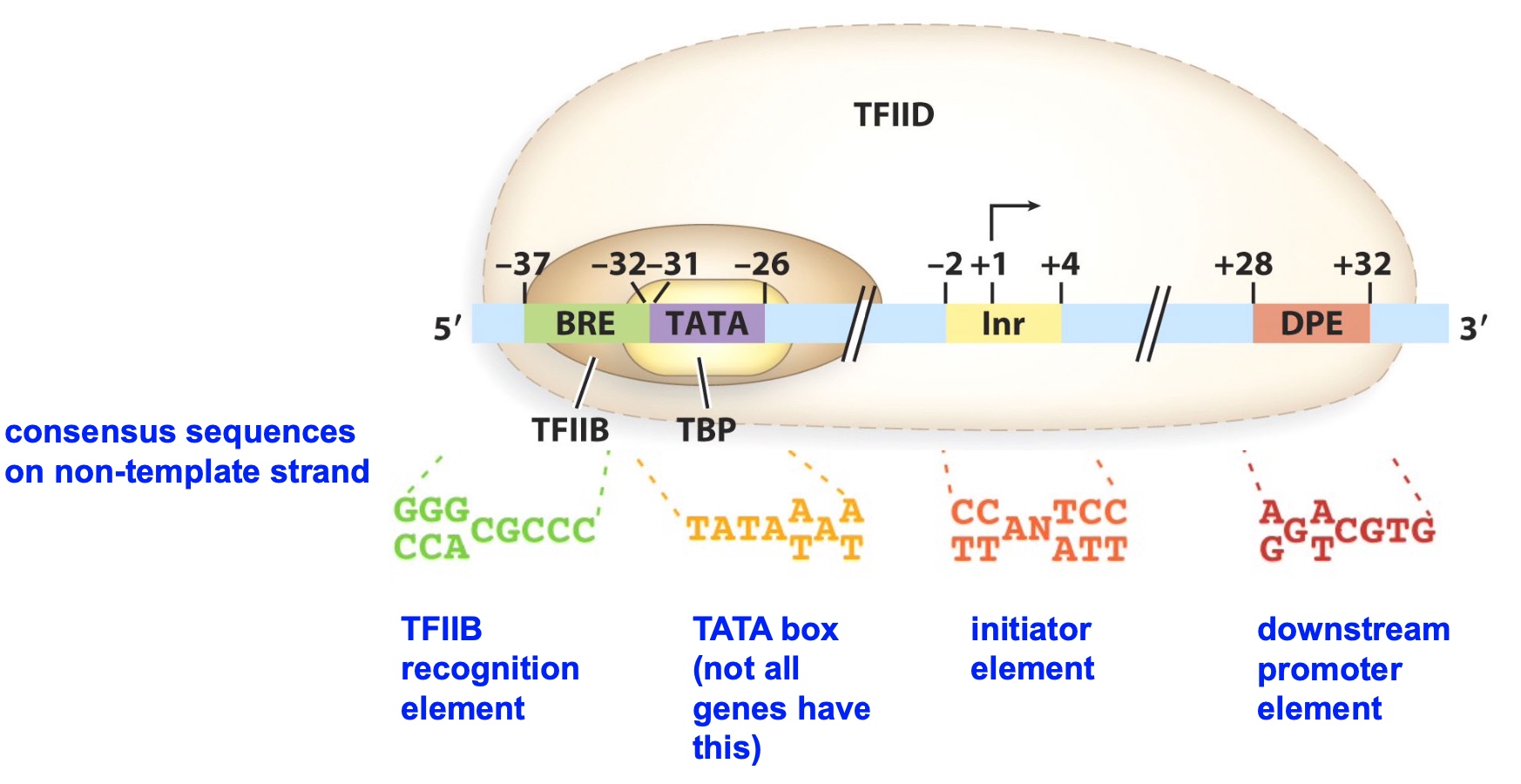
TFIID from Drosophila is composed of 10+ TBP-associated factors (TAFs)
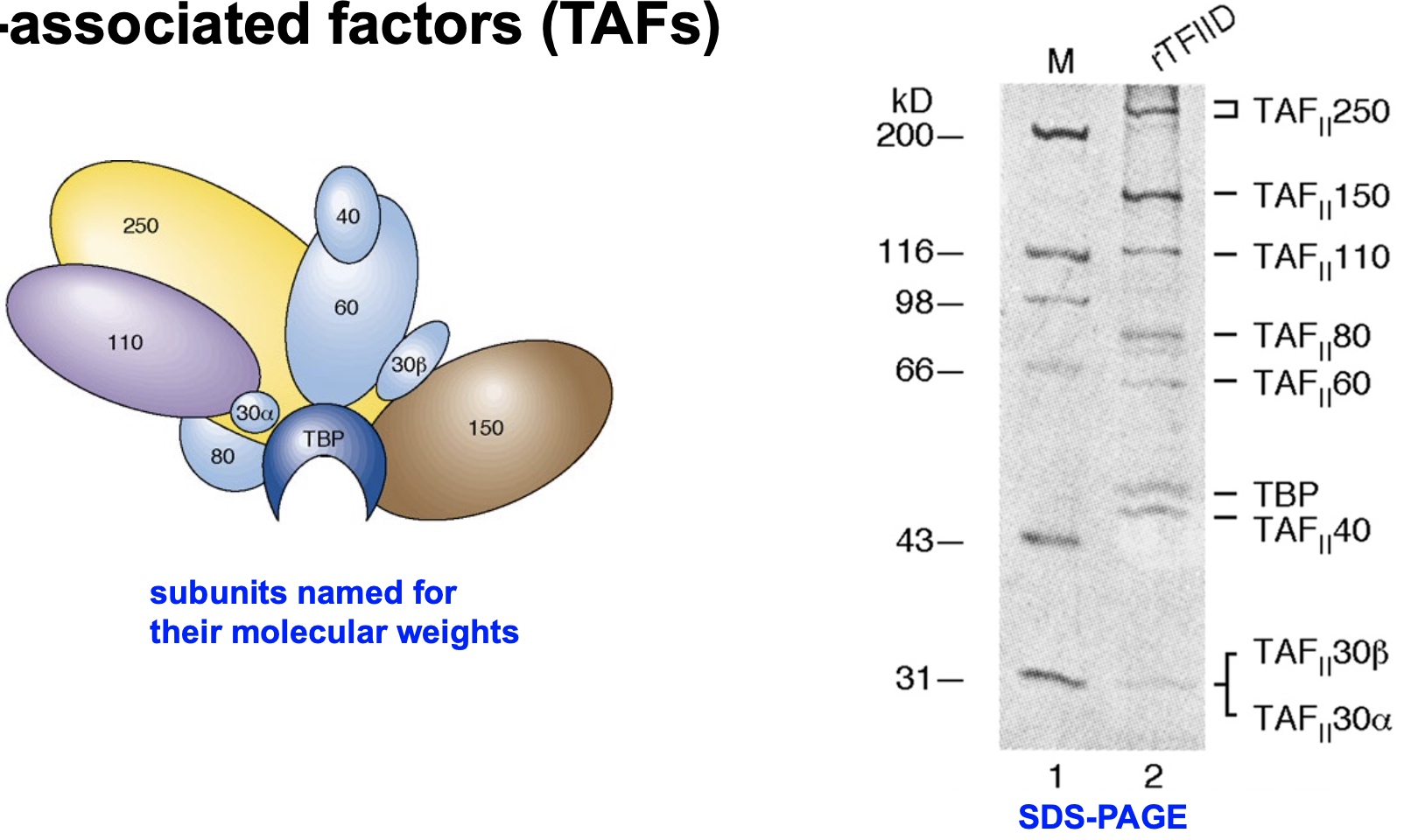
DNase footprinting experiment to determine where transcription factors bind

Using a DNA template
with consensus sequences from -60 to +40 of a generic template
Lane 2: incubated with purified components of
TFIID, TFIIA, TFIIB
Lane 3: added purified TFIIF and RNA pol
Crystal structure of the TBP-TATA box complex
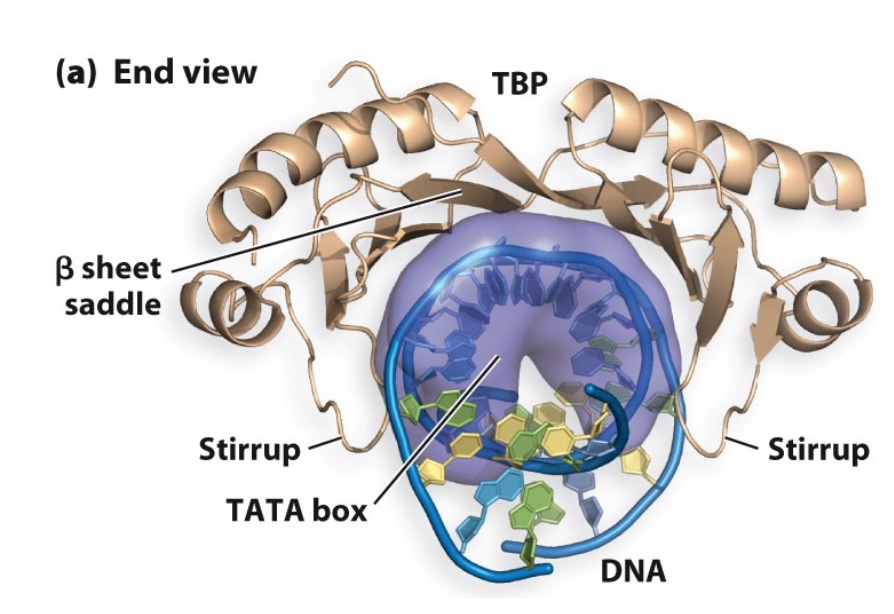
TATA binding protein binds in the minor groove, sits on the DNA like a saddle.
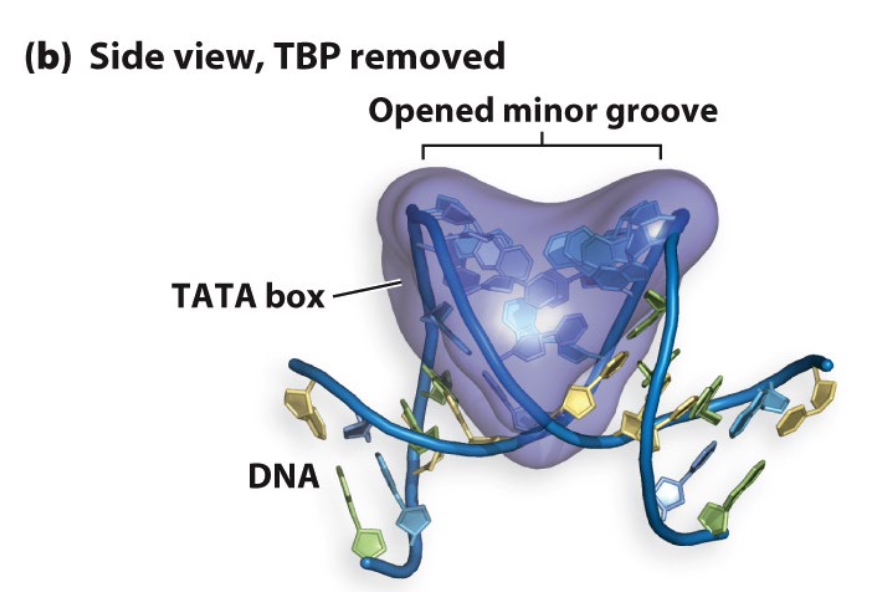
This kinks the DNA and allows other transcription factors to bind
The mediator complex also regulates initiation of transcription in eukaryotes
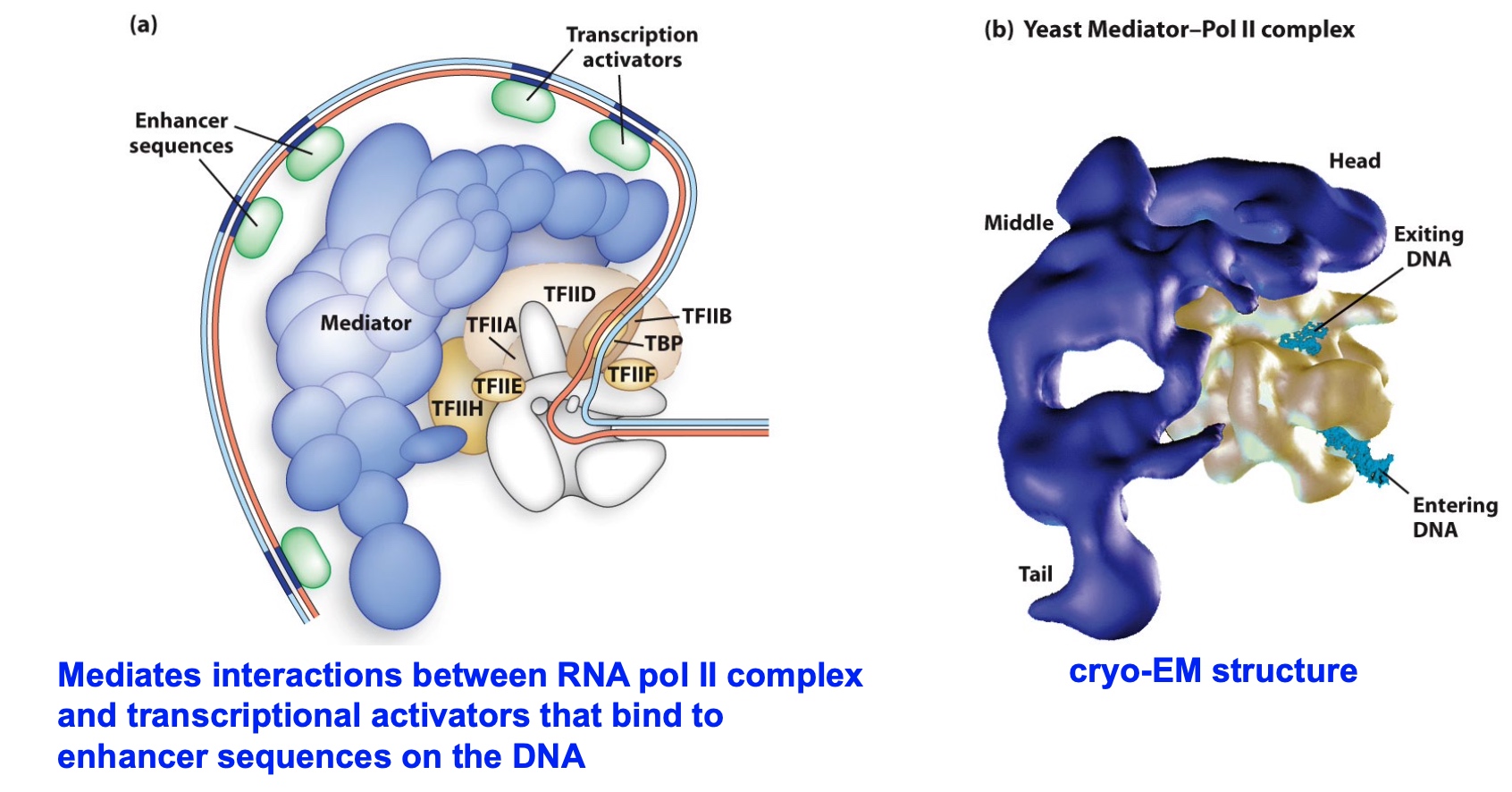
Eukaryotic “promoter proximal pausing”
- Based on ChIP-chip experiments in Drosophila and mammalian cells
- 20-30% of genes have enriched Pol II density at the 5’ end of genes
- May function to allow precise regulation of developmental programs
